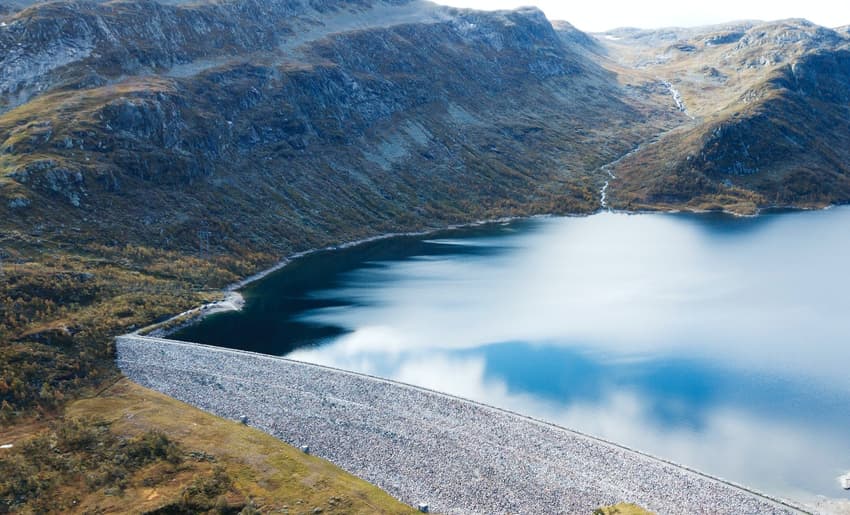Reservoirs in Norway remain at record low levels

Reservoirs used for hydroelectric production, which Norway relies on for its energy needs, remain at their lowest levels in 20 years, the latest figures show.
Norway's reservoirs are up 0.7 percent overall compared to last week. Still, it's bad news on the whole as reservoirs are at record low levels, the latest statistics from the Norwegian Directorate of Water Resources (NVE) show.
Filling levels in east and south-west Norway have remained at 20-year lows, despite the reservoirs in east Norway being up 2.2 percent points and those in the south-west being 0.8 percent higher.
Low reservoir filling levels, along with power export cables, the war in Ukraine and high gas prices have contributed to sky-rocketing energy prices in southern Norway since 2021.
Previously, analysts have refused to rule out the possibility of prices of up to 20 kroner per kWh.
Across the country, reservoirs are, on average, 68.1 percent full. The average for the past 20 years is around 83 percent. Dams in eastern Norway are 68.5 percent full, while the level recorded in south-west Norway is just over 50 percent.
In central and northern Norway, reservoirs are at higher than average levels for the time of year. These parts of the country also have the lowest energy prices.
Energy experts have told The Local prices would remain high until the spring when the snow from the winter melts and makes its way to dams.
"But prices will remain high until there is enough water in the reservoirs – that is, until spring, which is a crucial point in time. When it comes to prices, of course, the temperature will play the most important role. With colder temperatures, the prices will be higher. If the temperatures are milder, it will be less challenging. As you know, the temperature is important for gas prices, which – in turn – are important for electricity prices," Tor Reier Lilleholt, head of analysis at Volue Insight, told The Local.
READ MORE: What is the worst-case scenario for electricity prices in Norway this winter?
Comments
See Also
Norway's reservoirs are up 0.7 percent overall compared to last week. Still, it's bad news on the whole as reservoirs are at record low levels, the latest statistics from the Norwegian Directorate of Water Resources (NVE) show.
Filling levels in east and south-west Norway have remained at 20-year lows, despite the reservoirs in east Norway being up 2.2 percent points and those in the south-west being 0.8 percent higher.
Low reservoir filling levels, along with power export cables, the war in Ukraine and high gas prices have contributed to sky-rocketing energy prices in southern Norway since 2021.
Previously, analysts have refused to rule out the possibility of prices of up to 20 kroner per kWh.
Across the country, reservoirs are, on average, 68.1 percent full. The average for the past 20 years is around 83 percent. Dams in eastern Norway are 68.5 percent full, while the level recorded in south-west Norway is just over 50 percent.
In central and northern Norway, reservoirs are at higher than average levels for the time of year. These parts of the country also have the lowest energy prices.
Energy experts have told The Local prices would remain high until the spring when the snow from the winter melts and makes its way to dams.
"But prices will remain high until there is enough water in the reservoirs – that is, until spring, which is a crucial point in time. When it comes to prices, of course, the temperature will play the most important role. With colder temperatures, the prices will be higher. If the temperatures are milder, it will be less challenging. As you know, the temperature is important for gas prices, which – in turn – are important for electricity prices," Tor Reier Lilleholt, head of analysis at Volue Insight, told The Local.
READ MORE: What is the worst-case scenario for electricity prices in Norway this winter?
Join the conversation in our comments section below. Share your own views and experience and if you have a question or suggestion for our journalists then email us at [email protected].
Please keep comments civil, constructive and on topic – and make sure to read our terms of use before getting involved.
Please log in here to leave a comment.